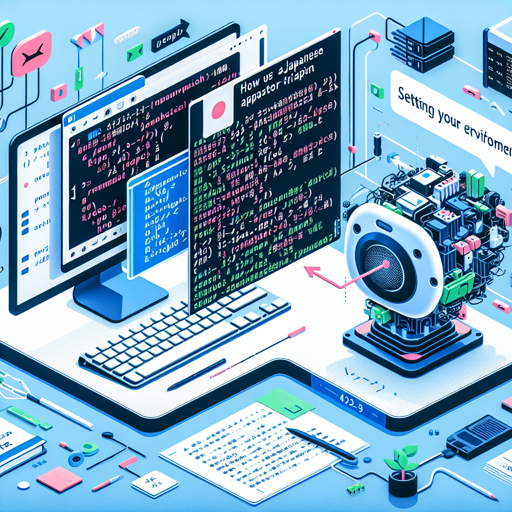In this article, we will explore how to use the C3TR-Adapter to enhance Japanese-English and English-Japanese translation capabilities using the gemma-2-9b model. Translating between languages can often be a challenging task, and with these tools, we can make it a seamless experience. Let’s dive into the nitty-gritty of setting it up, running translations, and troubleshooting common issues!
Step 1: Setting Up Your Environment
Before you start using the C3TR-Adapter, you need to have the appropriate libraries installed on your machine.
- Ensure you have at least 8.3 GB of GPU RAM available if you’re running it locally.
- If you’re lacking the required GPU memory, consider using the GGUF version available for non-GPU environments.
- Install the necessary libraries:
# Installing PyTorch
# If pytorch is not already installed, please refer to the official manual
# For Linux users with CUDA 12.1
pip3 install torch torchvision torchaudio
# For Windows users with CUDA 12.1
pip3 install torch torchvision torchaudio --index-url https://download.pytorch.org/whl/cu121
# Update required libraries for the model
pip install transformers==4.42.3
pip install peft==0.11.1
pip install bitsandbytes==0.43.1
Step 2: Loading the Model
Once your environment is ready, it’s time to load the C3TR-Adapter model using the following Python script:
import torch
from transformers import AutoModelForCausalLM, AutoTokenizer
from peft import PeftModel
model_id = "unsloth/gemma-2-9b-it-bnb-4bit"
peft_model_id = "webbigdata/C3TR-Adapter"
# Select appropriate data type for the model
dtype = torch.bfloat16 if torch.cuda.is_available() and torch.cuda.get_device_capability(0)[0] >= 8 else torch.float16
# Load model and tokenizer
model = AutoModelForCausalLM.from_pretrained(model_id, torch_dtype=dtype, device_map="auto")
model = PeftModel.from_pretrained(model=model, model_id=peft_model_id)
tokenizer = AutoTokenizer.from_pretrained(model_id)
tokenizer.pad_token = tokenizer.unk_token
Imagine you are a chef preparing a specialized dish. Each ingredient (here, the model and tokenizer) plays a crucial role to ensure the final product (your translation) turns out perfectly. Just like a recipe, following the instructions in the code above ensures you have everything set for the translation task.
Step 3: Translation Function
Let’s create a function that translates text:
def trans(my_str):
input_ids = tokenizer(my_str, return_tensors="pt",
padding=True, max_length=1800, truncation=True).input_ids.cuda()
# Translation process
generated_ids = model.generate(input_ids=input_ids, max_new_tokens=900,
use_cache=True, do_sample=True,
num_beams=3, temperature=0.5, top_p=0.3,
repetition_penalty=1.0)
full_outputs = tokenizer.batch_decode(generated_ids, skip_special_tokens=True)
return full_outputs[0].split("### Response:\n")[-1].strip()
# Example usage
result = trans("あら?また夜食を食べてるの?こんにゃくは太りません")
print(result)
Troubleshooting Common Issues
If you encounter problems while using the C3TR-Adapter, here are some troubleshooting tips:
- Ensure your GPU drivers and CUDA are updated.
- If you receive memory errors, consider optimizing your parameters like
max_lengthandmax_new_tokens. - For unexpected output or hangs, double-check that you have implemented the
start_of_turnandend_of_turnmarkers appropriately. - If none of these solutions fix your issue, refer to the GitHub repository for the model for additional resources or issues.
- For more insights, updates, or to collaborate on AI development projects, stay connected with fxis.ai.
At fxis.ai, we believe that such advancements are crucial for the future of AI, as they enable more comprehensive and effective solutions. Our team is continually exploring new methodologies to push the envelope in artificial intelligence, ensuring that our clients benefit from the latest technological innovations.
Final Thoughts
With the C3TR-Adapter, you’re equipped to tackle Japanese-English translations like never before. Whether you’re developing apps or conducting research, these tools can enhance your workflow immensely. Remember to follow the steps clearly, customize your parameters as needed, and most importantly, enjoy the process of creating robust translation solutions!

